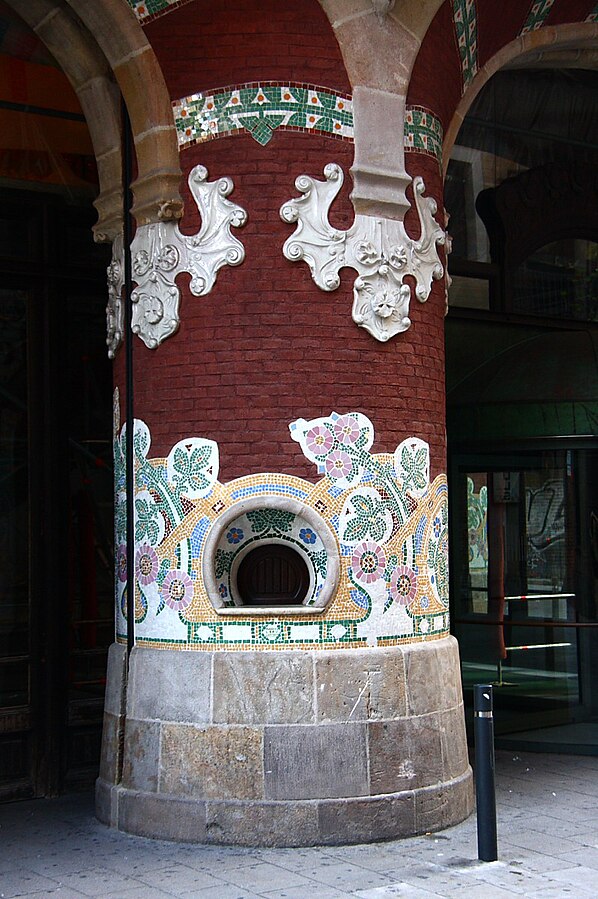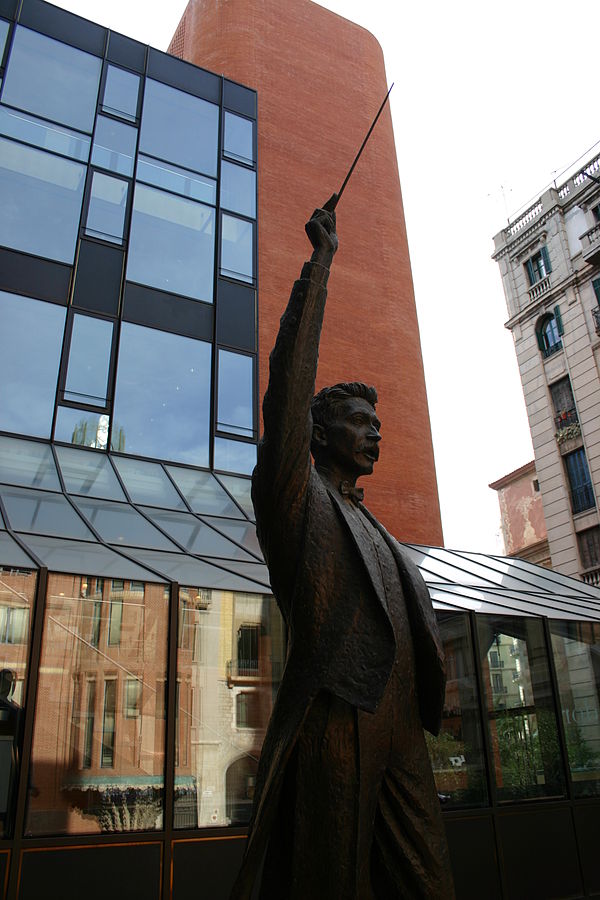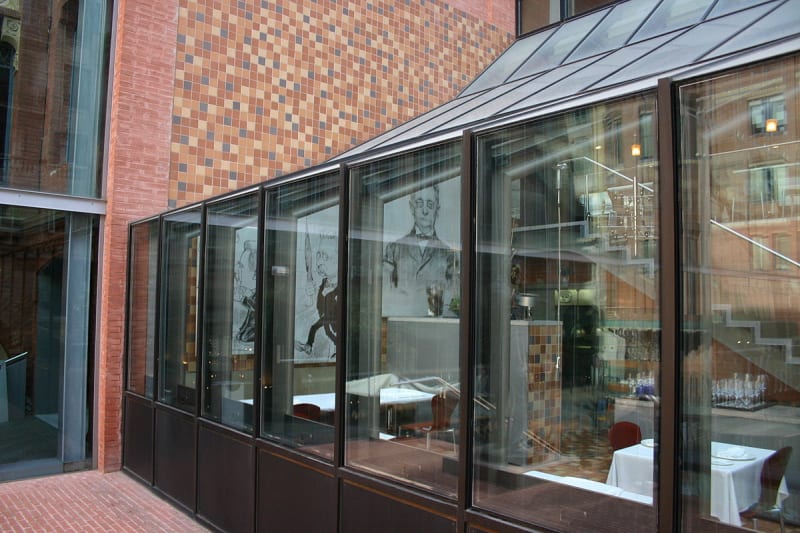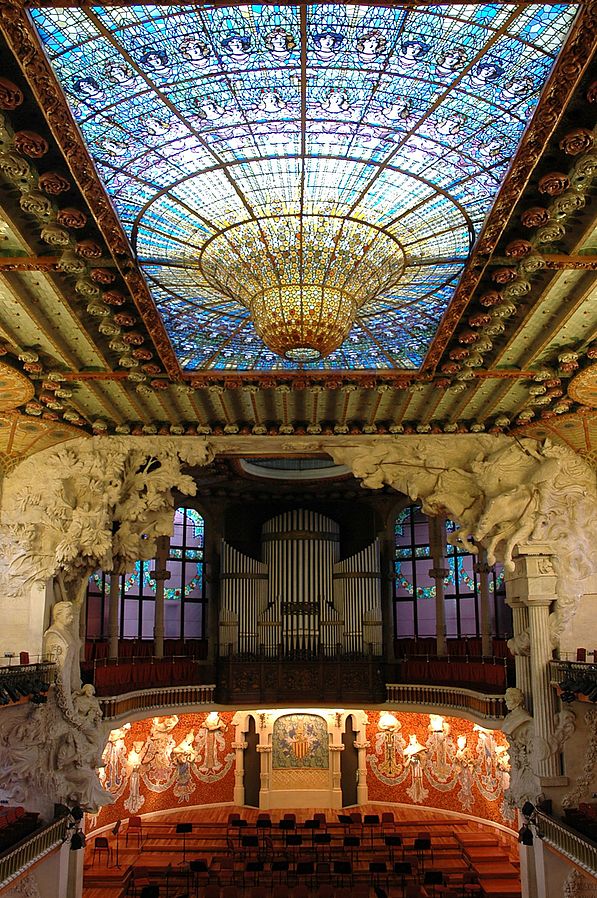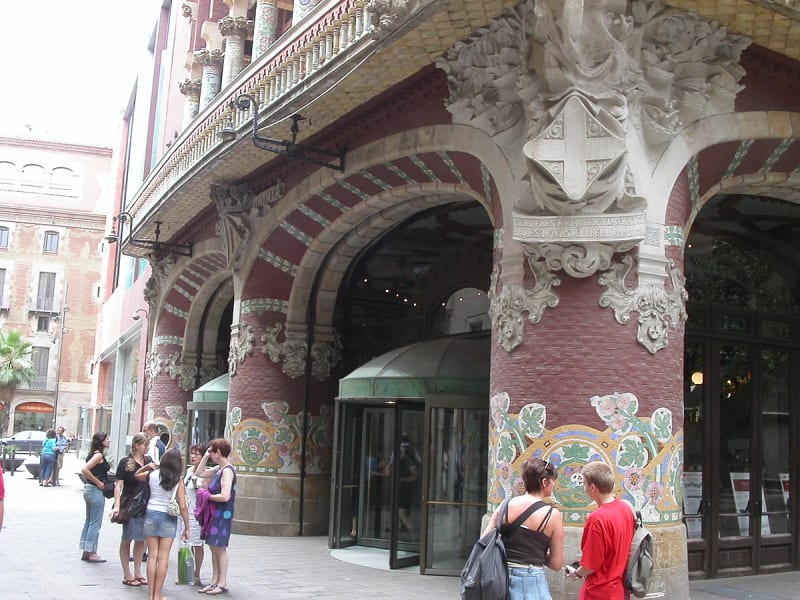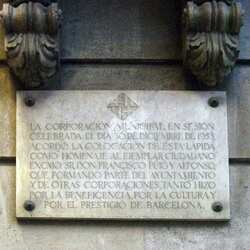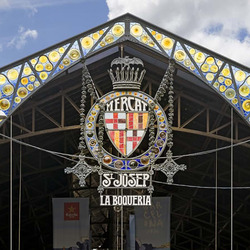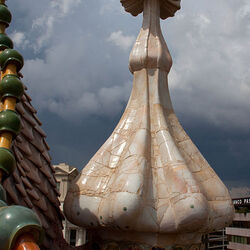Palace of Catalan Music
The Palace of Catalan Music was built by architect Lewis Domenech y Montaner. In Barcelona, a magnificent building built in the Art Nouveau architectural style stands above the San Pere quarter. The style implies a pronounced predominance of dynamics over statics, curved outlines over rectilinear ones, and decorations in the form of elegant ornaments.
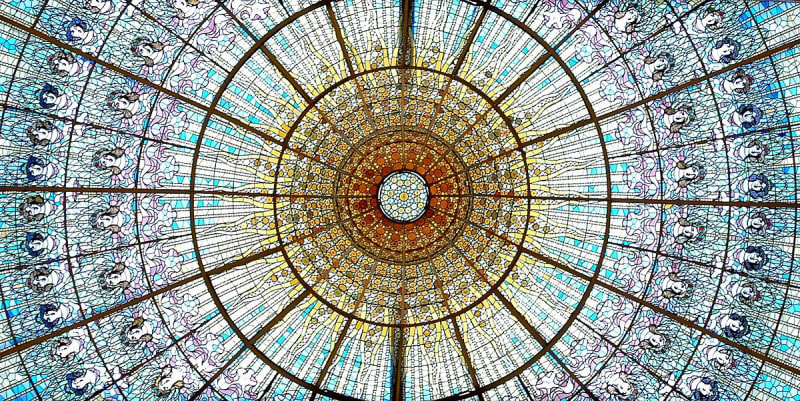
Description of the Catalan Music Palace
The facade is characterized by a harmonious interweaving of details of different architectural styles, including traditional Catalan and quaint Arabic. The second tier of the facade is decorated with two columns lined with bright tiles of different colors. The columns end with original candelabra.
Busts of the greatest composers – Bach, Wagner, Beethoven and Pierluigi da Palestrina - are installed above the columns. There is also a sculpture by M. Blaya, symbolizing a Catalan popular song. The facade is lined with mosaics depicting members of the Orfeo Catalan choir.
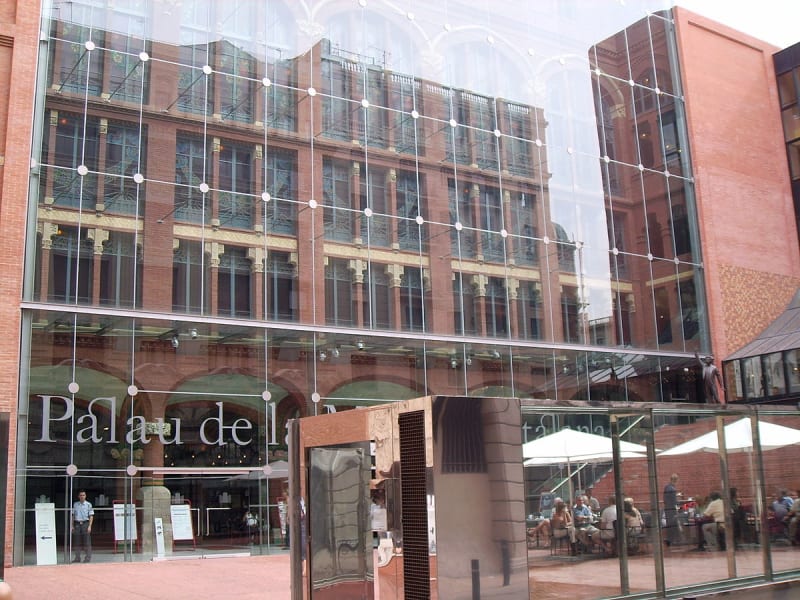
An interesting fact is that the Palace of Catalan Music was built around a metal frame, which made it possible to make large halls and halls.
The concert hall can accommodate more than 2,000 spectators. The hall is illuminated by daylight, this lighting practice was used for the first time in the world, and is the only one so far. The vault in the form of an inverted dome is decorated with mosaics. In the center it is golden in color and symbolizes the sun, on the sides it is blue-blue and symbolizes the sky. The walls of the hall are decorated with colorful stained glass windows. Daylight, refracted by colored mosaics, creates an unusual mysterious atmosphere in the hall.
Sculptures made by craftsmen in the early twentieth century are installed in the hall. Among them, the composition stands out, showing the scene of the flight of the valkyries based on the plot from Wagner's opera. The Catalan flag is placed in the middle of the stage of the Palace of Catalan Music. There are 18 female sculptures right on the stage, symbolizing the muses of Ancient Greece. A white organ is visible above the stage. His enchanting sounds have been winning the hearts of listeners for many years.
In addition to the Concert Hall, there are 2 more halls used for chamber concerts. The halls have excellent acoustics, the quality of which has been improved by modern technologies. In the Rehearsal Hall, in a place of honor, there is a stone that was once laid at the beginning of construction.
The history of the creation of the Catalan Music Palace
Initially, it was planned to build a building for rehearsals and concerts of the local Orfeo Catalan choir for the opening of the International Exhibition in 1888. The repertoire of the collective consisted mainly of works by Catalan authors. The work on the project was carried out by architect L. Domenech y Montaner. The building was built from 1905 to 1908 on private donations.
The Palace of Catalan Music aroused genuine admiration of those present at the opening. First, the sacrament of consecration was performed, followed by a concert by the Orfeo choir.
A year later, the City Council awarded the architect an honorary gold medal, and the Palace was recognized as the best building of the year. But over the next few years, numerous shortcomings came to light. The main one was the unusual acoustics. The building even received the offensive nickname "The Palace of Catalan Garbage." The sounds of the concert were sometimes drowned out by the ringing of nearby church bells and the usual street noise. But no changes were made for a long time.
In a short time, the Palace transformed from a choir rehearsal room into the best concert hall in Barcelona. Many world celebrities, such as Montserrat Caballe, Jacques Thibault, Wanda Landowska and many others performed in the Palace.
The repertoire of the Palace presents a wide range of musical compositions, from classical to jazz, from ancient Catalan to cutting-edge treatments.
In 1971, the Palace received the status of a National Monument. In 1982-1989, the Palace underwent a grandiose restoration under the direction of architect O. Tusketsa. Then an additional 6-storey building was added. It houses dressing rooms, an archive and a library. From 2006 to 2008, restoration was carried out again, affecting the facade elements. In 1997, the Palace of Catalan Music was included in the UNESCO World Heritage List. More than half a million people visit the Catalan Music Palace every year.
